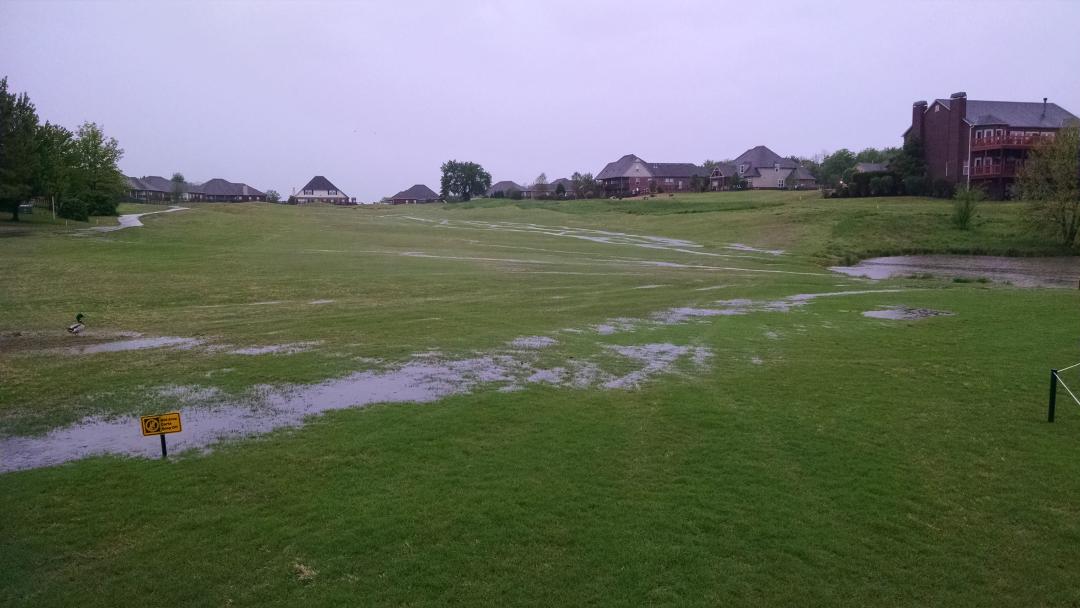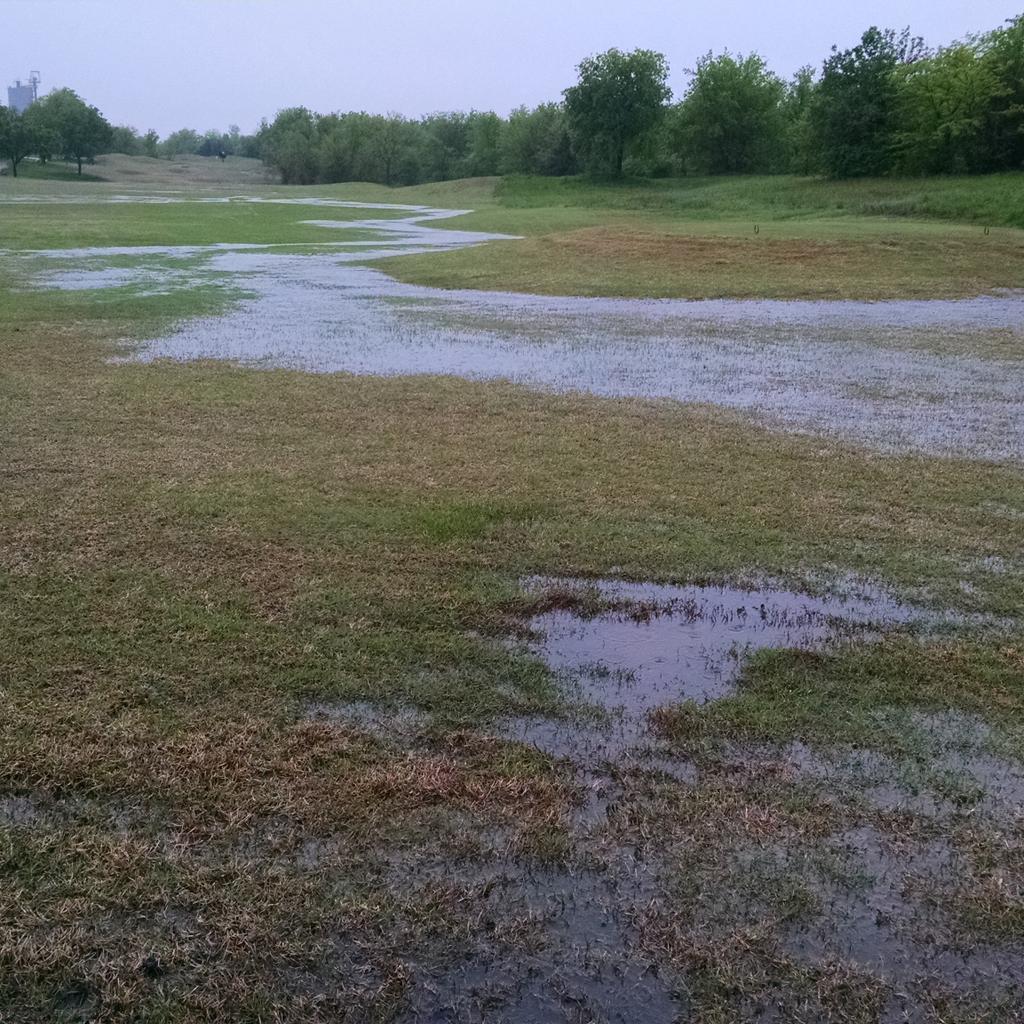 |
| #7 greens surround taken August 14th |
 |
| #4 fairway taken August 30th |
Over the past month or so, the golf course has seen a lot of seasonal changes. During the last week of July, the typical hot, dry summer weather pattern started to settle in and the golf course began to dry out. This dry pattern continued until rains came in mid-August.
Although our irrigation system is more efficient than I've ever seen it, it cannot give the grass all the water it needs to replace what is being evaporated in the absence of periodic rains. As a result, the Bermuda on the course began to turn brown and semi-dormant in certain places. Although this is normal for this time of year, I still had a lot golfers in disbelief that we could be so dry after having so much rain this spring. The picture on the right was taken on August 14th and it's clear to see we missed some key rains in July. I recently wrote in greater detail on the dry weather pattern and it can be found
here. Relief from the hot, dry weather came in the form of several big storms that, not only dumped almost 7 inches of rain, but dropped the temperatures down into the 80's. As you can see from the picture on the right, the golf course greened back up quickly.
 |
| Removing thatch on #17 |
Aside from the weather, the staff has done a fantastic job of not only keeping up with our daily tasks, but completing timely improvement projects leading up to Labor day weekend. Slicing of fairways and greens mid month alleviated compaction stress, and provided a much needed dose of oxygen into the rootzone during this most stressful time of year. Our chemical applicator, Doug, applied fertilizer to the entire golf course a week before the rains started which allowed us to recover from the dry weather very quickly. Last week, the staff performed a quick core aeration on collars. Once this was drug in and watered, there was very little, if any, disruption to the surface. This will heal before the holiday weekend and provide long lasting benefits well into fall.
 |
| Removed a lot of organic during this process |
In the two weeks leading up to Labor Day weekend, the staff has verticut greens several times, to smooth and firm the surface. All fine turf areas (tees, fairways, etc.) have been sprayed with fertilizer to improve color and density. Bunkers have become a main focus. The staff edged them last week and this week, a full depth audit will be performed, with fresh sand added where needed to improve consistency.
 |
| Applying nitrogen and growth regulator for color and density |
Overall, I couldn't be more proud of the staff and the hard work they've put in over the past month to ensure the best possible conditions leading into this important holiday weekend. I hope to see many of you out there enjoying the golf course!
 |
| A fresh edge always improves the look of the bunkers |
















































